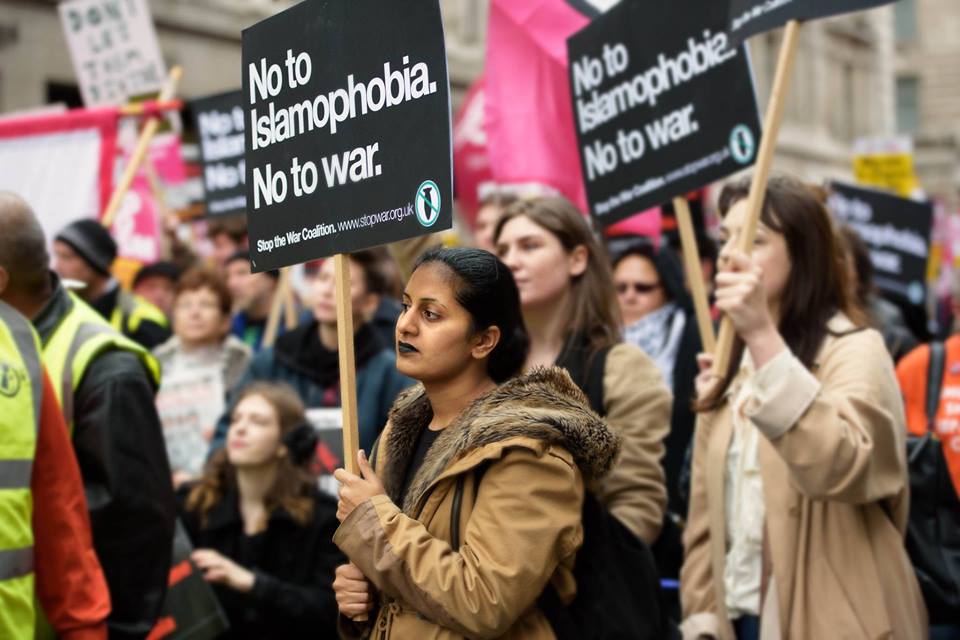If anyone had doubts about the direction of Trump’s Middle East policy, the last few days should have cleared them up
Chris Nineham

‘Largely unreported in the mainstream media, the US is escalating its intervention across all fronts in the region.’
On Friday, a drone strike near Aleppo hit a mosque and killed up to 46 people. The US accepted responsibility for the strike which the Syrian Observatory for Human Rights, a Britain-based monitoring network, described as a “massacre,” saying the dead were mostly civilians.
This attack follows the first announcement of regular troop deployments in Syria since the start of the war. 1,000 troops have been earmarked to join the offensive against Raqqa.
As early as February this year, it appears that the US was killing more civilians in Syria than Russian forces.
Meanwhile across the border in Iraq, the US backed assault on Mosul is increasing in intensity. Airwars has estimated that as many as 369 civilians were killed in just one week at the start of March by air strikes in one district of southwest Mosul, way more than admitted by the leaders of US operation Inherent Resolve.
Reports from within the city suggest that the population is blaming much of the devastation on attacks by US aircraft and helicopter gunships.
Middle East Eye reports growing anger amongst local people. They quote one eye witness saying:
“Countless civilians have been killed by these air strikes and many, many bodies are still lying underneath their homes,”
“The aircraft see one Daesh guy on the roof and drops a bomb to get him but, in the basement below, a family of 10 people are sheltering and they get killed too.”
Another blamed the attacks that have buried whole families on the US:
“They are definitely coalition air strikes. Most of them are done by unmarked aircraft without any Iraqi flags, and only America has Apache helicopters here, not the Iraqi air force…anyway, the Iraqi military can’t do anything here without the permission of the US.”
Fighting On All Fronts
The level of violence in the brutal Saudi led war against Yemen continues to rise as well – with US collaboration as Foreign Policy reported on March 9:
“After a week of punishing airstrikes loosed on al Qaeda in Yemen that saw 40 targets go up in flames and smoke, American pilots took a breather the past two nights, watching the dust settle.
The weeklong blitz in Yemen eclipsed the annual bombing total for any year during Obama’s presidency. Under the previous administration, approval for strikes came only after slow-moving policy discussions, with senior officials required to sign off on any action. The Trump administration has proven much quicker at green-lighting attacks.”
The US role was exposed again on Friday when at least 42 Somali refugees fleeing the country were killed by an attack on their boat by an apache helicopter gunship, almost certainly supplied to the Saudis by the US.
Micah Zenko from the Council on Foreign Relations has identified a dramatic ramp up in drone attacks in the region since Trump’s inauguration. In his own words:
“During President Obama’s two terms in office, he approved 542 such targeted strikes in 2,920 days—one every 5.4 days. From his inauguration through today, President Trump had approved at least 36 drone strikes or raids in 45 days—one every 1.25 days.”
The View From Trumpland
This series of incidents is not coincidental. Largely unreported in the mainstream media, the US is escalating its intervention across all fronts in the region. This reflects the consensus that emerged towards the end of Obama’s presidency in the US Foreign Policy community that for all its brutality, Obama’s posture to the Middle East was way too restrained.
During his presidency, Russia, China and Iran all increased their influence in the region, and Trump’s new administration is committed to rolling them back. Such a policy can only inflame an already dangerously fraught situation. Any semblance of a peace process appears to have broken down in Syria. Israel, no doubt emboldened by the change of US policy, has stepped up its bombing raids, making Syria the most militarily contested country anywhere since World War Two.
And the Middle East is just one element in a more and more dangerous global situation. Richard Fontaine from the ‘moderate’ think tank the Centre for a New American Security, recently provided an insight into how the world looks from the White House:
‘Russia is more active in the Middle East today than it has been at any point since the 1973 Yom Kippur War, and it has initiated a program of disruption and intimidation across Europe. China has stepped up its efforts to solidify claims over most of the South China Sea and enhance its economic influence over the region. Iran has become the primary external actor in Iraq, Syria, and Lebanon.’
Trump’s first two months suggest that his response to such challenges to US hegemony will be confrontational. Having generated much revulsion and protest around the world already it is crucial that the spirit of resistance is maintained to stop him dragging the world deeper into war.
